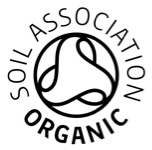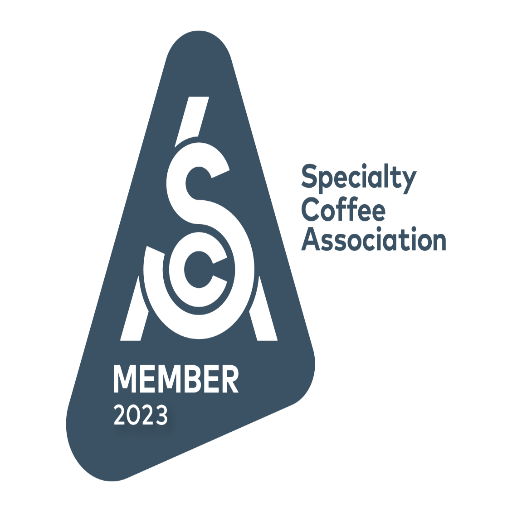Consumers are increasingly concerned about the caffeine levels of the coffee they drink – Google’s trend analytics indicate that the search term “caffeine in coffee” is becoming more common with every passing year. This isn’t an enormous surprise. Consumers’ interest in health and nutrition is becoming more nuanced and developed. The likelihood of them asking their barista/coffee supplier about the caffeine in their coffee is high- how much there is, where it comes from, if it’s dangerous and how they can control their intake. Here are some of the questions consumers are likely to ask, and the answers that can be provided for them.
Why is there caffeine in coffee?
Researchers have identified two primary roles for caffeine in the coffee plant’s life cycle. Firstly, caffeine is a natural insecticide – it appears in the coffee cherry and its seeds (the bean) to keep pests at bay and ensure the beans are consumed only by something large enough to spread them. Secondly, caffeine helps the plants spread – the first seeds to start germinating will release caffeine to poison others nearby, ensuring that the plants don’t crowd each other out of good soil and light.
Doesn’t that mean caffeine is a poison?
Technically, yes. Caffeine is a methylxanthine – we often use stronger chemicals of this type as pesticides. Coffee itself happens to repel slugs, but the effects which would kill a slug are merely symptoms of addiction in humans. You’d need to drink an impossible amount of coffee over a long period to start experiencing slug-like ill-effects. Meanwhile, drinking a modest amount of coffee has numerous health benefits – helping to prevent type 2 diabetes and Parkinson’s disease, maintain the functioning of the heart and, in many cases, alleviating the symptoms of a migraine.
How much is ‘a lot’?
For adults, the safe limit is generally around 400mg of caffeine per day (or 100mg for teenagers). Converting that into real terms – “how many cups of coffee is too many” – isn’t easy. A small homebrewed cup might have as few as 50mg, while a coffee shop grande you need to lift with both hands might contain up to 300mg.
How much caffeine is in your coffee?
Several factors are at work:
The bean
All beans are not created equal. Arabica beans’ caffeine content sits at around 1.2% of their total mass; robusta beans contain around 2.2% caffeine. Laurina coffee beans stand out because they’re naturally low on caffeine, lower than decaffeinated coffee in fact – their caffeine content can be as low as 0.36%, and averages at around 0.6%.
Growing conditions
Research indicates that coffee plants produce more caffeine when the soil around them is rich in nitrogen and low in potassium. Particular varieties of coffee are adapted to highly specific climates – for example, arabica is very sensitive to temperature increases, to the point where the quality of arabica harvests is noticeably improved by major temperature differences between day and night.This is generally why coffee grown at high altitudes fairs better in quality analysis – the daily temperature swings between night and day are greater.
Decaffeination
Different decaffeination processes yield different results. 70% of the world’s decaffeinated coffee is decaffeinated through solvent-based processes which remove around 97% of caffeine from beans. The Swiss Water Process, often used in organic coffee, is an entirely water-based system which takes longer, but removes slightly more caffeine (an average of 99%) and preserves more flavour. Bulk-production coffees are often decaffeinated with carbon dioxide – an efficient but expensive method.
Roast intensity?
There are myths, arguments and counter-arguments surrounding whether dark or light roasts have more caffeine. Dark roasts seem stronger – partly because of the deeper flavour, and partly because the word ‘light’ connotes less strength. The truth? It depends on how you measure. Dark roasted beans have a lower moisture content than those roasted lighter, and this tends to expand the beans to a greater size. If you measure your coffee by volume rather than weight, there will be a bit less caffeine present in the darker roasted bean.
Ultimately, though, the difference is minimal. The hottest, darkest roasts seldom exceed 250℃, and caffeine is pretty tough – you would need to roast at around 600℃ before any significant caffeine loss occurred.
Method of brewing
The method of brewing does have an impact, but not as much as consumers think it does. Again, flavour is a factor in shaping consumer perceptions, as is size. An espresso has a higher caffeine content by volume than a drip or filter coffee, but only because it’s physically smaller. The short answer: Brew methods with higher levels of extraction will have more caffeine, just don’t be fooled by the size of the cup!
Although roasting has little effect on the actual caffeine content of coffee, consumers believe it does and are concerned about caffeine. We’d advise roasters to be aware of their coffee’s caffeine level and where it comes from, and to advise on how consumers can control their intake. If you know you’re going to have a particular blend on your menu for a long time, it’s worth knowing how much caffeine is in it, roughly, and how to talk about that with your consumers. Familiarise yourself with the caffeine levels in each of your roasts and your consumers will love you for it.









